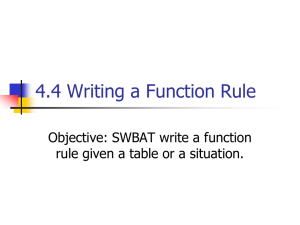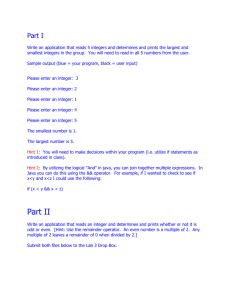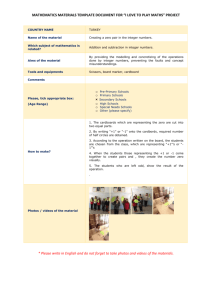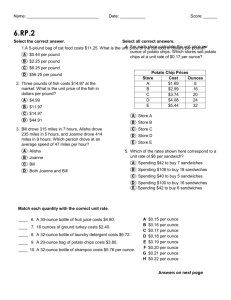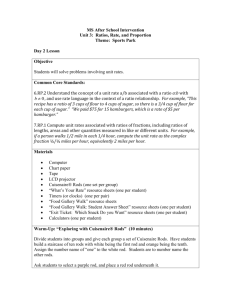Module 1 Lesson 3 Notes
advertisement
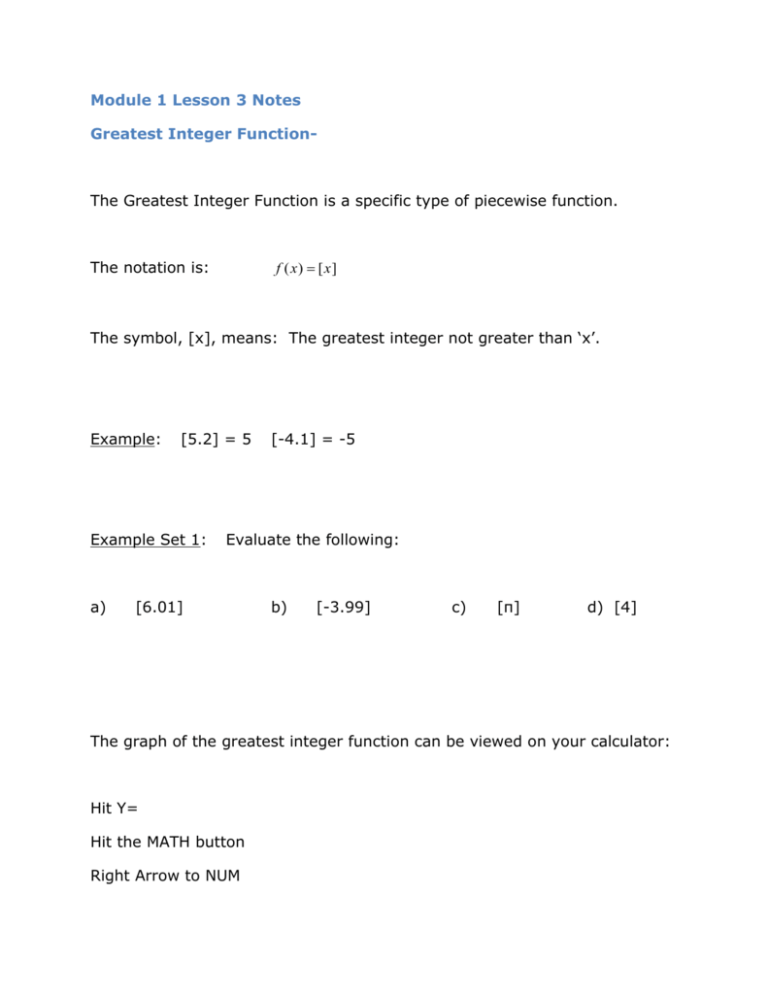
Module 1 Lesson 3 Notes Greatest Integer Function- The Greatest Integer Function is a specific type of piecewise function. The notation is: f ( x) [ x] The symbol, [x], means: The greatest integer not greater than ‘x’. Example: [5.2] = 5 Example Set 1: a) [-4.1] = -5 Evaluate the following: [6.01] b) [-3.99] c) [π] d) [4] The graph of the greatest integer function can be viewed on your calculator: Hit Y= Hit the MATH button Right Arrow to NUM Arrow down to 5. int( Hit ENTER Hit ‘x’ Close the parenthesis The graph looks like this: Don’t be fooled by the fact that the lines are all connected. They aren’t supposed to be. This is equivalent to when we looked at rational functions and the calculator drew in the vertical asymptote as a part of the function. A better look at the function might be seen with this crude drawing: Something else to remember that can’t be shown very well in the graph above, is that each of those line segments is closed on the left side and open on the right: That is because for each value, it’s the greatest integer not greater than ‘x’. The integer greater than ‘x’ is not included (the open circle on the right). Modeling with step functions occurs in many places. In 1988, the US Post Office charges their 1st class mail customers a rate that depends on the weight of the item being mailed. An item not exceeding one ounce costs $0.39. An item over one ounce but less than 2 ounces costs $0.63 and so on. Graph this function in your notes. Weight (oz.) Rate ($) 0 x 1 $0.39 1 x 2 $0.63 2 x3 $0.87 3 x 4 $1.11 4 x5 $1.35 5 x 6 $1.59 6 x 7 $1.83 7 x 8 $2.07 8 x 9 $2.31 Example Set 2: a) How much does it cost to send something that weighs 6.25 ounces? b) In this function, are your horizontal line segments open on the left or right? Example Set 3: Bob’s automotive garage charges $45 per hour or any fraction of an hour for labor when they service cars. a) Sketch a step function graph for x = 0 to 10 hours b) Bob gives a $15 discount on the total charge if you leave your car overnight. Create a new graph for Bob’s charges when people leave their cars overnight. Answers: Example Set 1: a) 6 b) -4 c) 3 d) 4 Example Set 2: a) $1.83 b) In this case, the values are open on the left, closed on the right. This is because a portion of an ounce is rounded up to the nearest ounce for calculation of cost. So the right side of the segment is included, the left side is not. Example Set 3: a) The graph should be a step function. The y-values should be $45, $90, $135 and so on. The line segments should be open on the left and closed on the right. b) This graph is a vertical transformation of graph (a) down 15 units. It should look exactly the same picture-wise. The only change is that the y-values should now be $30, $75, $120, etc. Absolute Value: Absolute value is the distance a number is from zero. So that means it could be in the positive or negative direction. Therefore y = |x| means that y = x or y = - x So y = |7| = 7 Exercise set 4: Evaluate a) |3| b) | -91| c) | - ½ | Parent graph y x , is the parent graph of the family of absolute value graphs. The graph looks like this: To graph using your calculator, you got to Y= math Num abs( So now you will have y = abs( Enter in x and close the parenthesis. Y = abs ( x) The transformations to the absolute value are the same as discussed previously in other lessons. Example: Describe the transformations to y = | x| when h = 3| 2x| -1 Solution: The 3 gives the function a vertical stretch by a factor of 3, the 2 gives the function a horizontal compression ( shrink) by a factor of ½ and the -1 moves the function down 1. Answers : Exercise set 4 a) 3 b) 91 c)½

